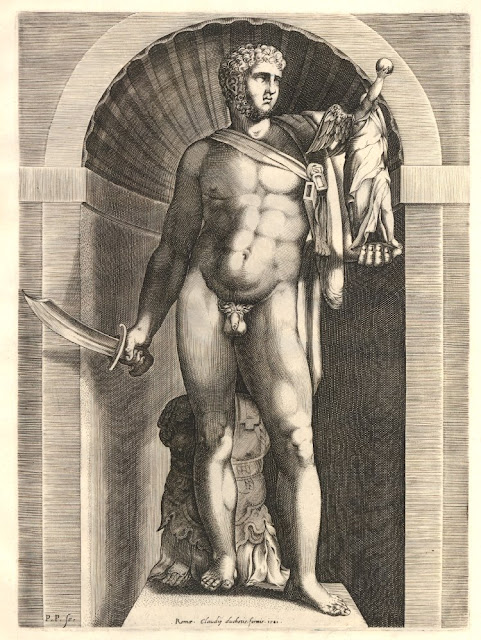 |
| Anonymous printmaker Two antique statues ca. 1530-70 engraving British Museum |
Just as 16th-century Romans expected their antique statues to be physically complete, they also expected to view sculpture in exactly the same way they viewed paintings – straight-on, face-to-face, from the front. Few pieces were displayed free-standing, few could be viewed in the round. The norm was to set these large marble objects against walls or inside niches, restricting and directing the way they should or could be experienced.
 |
| Anonymous printmaker Two antique statues ca. 1530-70 engraving British Museum |
 |
| Anonymous printmaker Two antique statues ca. 1530-70 engraving British Museum |
 |
| Antoine Lafréry, publisher Antique statue of Meleager 1555 engraving British Museum |
 |
| Giulio Bonasone Antique statue of Diana in niche ca. 1531-76 engraving British Museum |
 |
| Giulio Bonasone Antique statue of Diana in niche ca. 1531-76 engraving British Museum |
 |
| Giulio Bonasone Antique statue of Leda in niche ca. 1531-76 engraving British Museum |
 |
| Giulio Bonasone Antique statue of Muse in niche ca. 1531-76 engraving British Museum |
 |
| Jacob Bos Colossal antique statue of Mars in niche 1562 engraving British Museum |
 |
| Cornelis Cort & Antoine Lafréry Antique statue of warrior with dead boy 1574 engraving British Museum |
 |
| Pedro Perret Antique statue of Diomedes in niche 1582 engraving British Museum |
 |
| Enea Vico Antique statues in the delle Valle collection 1541 engraving British Museum |
 |
| Enea Vico Antique statues in the della Valle collection 1541 engraving British Museum |
 |
| Enea Vico Antique statue of Venus with Cupid 1561 engraving British Museum |